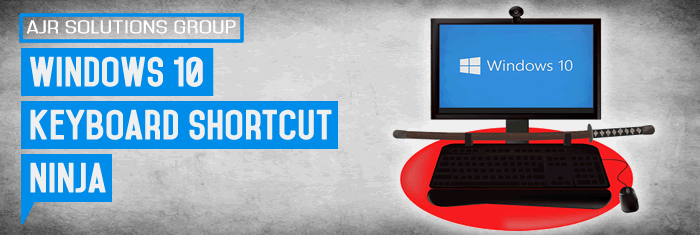Copy, Paste, and Cut
These are the most well-known and used, but a reminder that they are there is not a bad thing. When you have selected some text with your cursor, you can use CTRL+C to copy the text (or URL) and CTRL+V to then paste it. Since you copied the text, you can paste it as many times as you desire. However, if you would like to cut the text on your screen instead of copy it – as in getting rid of it completely – hit CTRL+X instead, and then CTRL+V to paste.
Find Something on Any Web Page
Are you tired of searching for something with your eyes on a web page? Not a problem. As long as a page is mostly text, you can use CTRL+F. On any mainstream web browser, this pops up a search box. Type in your query and you will be able to find it no matter where it is located on the page.
Switch Between Apps, Pages, and Open Windows
This feature has only recently been implemented in Windows, but if you have Windows 7 or 8, you might find it handy. Do you want to see what’s going on in Word while you’re browsing the internet? Do you have a full-window game you want to minimize to see who just messaged you on Facebook? Simply hit Alt+Tab to give yourself a selection of windows. Hit Tab as many times as you need to until you reach the window you’re looking for. You can even select your desktop.
Lock Your Computer Quickly
If you’ve gotten up and are walking away from your computer, it’s always a good idea to lock it before while you go. For security reasons, locking your computer even while you’re away for lunch is a good idea. Of course, you don’t want to have to reach down and mouse over to the “lock user” menu if you don’t have to, so simply hit the Windows Key + L to lock quickly. This works well if there’s someone looking over your shoulder that you’d prefer not to see what you’re doing.
Above are the easiest and most useful shortcuts available on almost any modern Windows machine, and while they may seem awkward at first, you’ll probably be using them by the end of the week because of how handy they are.
Ok so the above shortcuts are the most well known and used by most experienced computer users, now lets take a closer look at windows 10 and the newer features and shortcuts.
Windows Snapping
Windows snapping has slightly changed in the new windows 10 operating system and shortcuts have also. Application windows can be snapped to each side of the screen, as it was in Windows 8, but now you can also assign them to quadrants and get four windows open on the screen simultaneously.
Windows Key+Left – snap active window to the left.
Windows Key+Right – snap active window to the right.
Windows Key+Up – snap an active window to the top.
Windows Key+Down – snap an active window to the bottom.
Bonus: Whenever you snap a window to a side or a quadrant, Windows automatically suggest to pick one of your open applications to fill the remaining real estate on the desktop.
Virtual Desktops
Virtual desktop support is an exciting new addition in Windows 10 – unless you have been developing a third-party utility to do the same job! It’s kind of like having extra invisible monitors. Each desktop can have its own set of applications but shortcuts and wallpaper are consistent across the board.
Windows Key+Ctrl+D – create new virtual desktop.
Windows Key+Ctrl+Left – scroll through desktops to the left.
Windows Key+Ctrl+Right – scroll through desktops to the right.
Windows Key+Ctrl+F4 – close the current active desktop.
Windows Key+Tab – see all desktops (and open applications) via Task View page.
Cortana & Settings
Yes, we realise Cortana is not currently available in the Australian version of Windows 10. However, gaining access is a simple matter of changing your Region & Language settings which takes around ten seconds.
If you don’t feel entirely comfortable shouting out “hey Cortana!” across a crowded room, then there are keyboard shortcuts that can help — once Cortana is active, you can choice voice or keyboard input.
Windows Key+Q – open up Cortana ready for voice input.
Windows Key+S – open up Cortana ready for typed input.
Windows Key+I – open up the Windows 10 settings pane.
Windows Key+A – open up Windows 10 notifications (Action Center).
Windows Key+X – open the Start button context menu (the one with easy access to a host of common computer management features like the Command Prompt below).
Command Prompt (CMD)
New Windows 10 command prompt gets new keyboard shortcuts also. To use them, right-click on the command prompts title bar and choose the Properties option. On this Options tab, un-tick Use legacy console and enable Ctrl key shortcuts as well as the two text selection options.
Shift+Left – highlight text to the left of the cursor.
Shift+Right – highlight text to the left of the cursor.
Ctrl+Shift+Left (or Right) – highlight blocks of text instead of just characters at a time.
Ctrl+C – copy selected text to the Windows clipboard.
Ctrl+V – paste text from the Windows clipboard into command prompt.
Ctrl+A – select all text after the prompt.
These work in other text-based applications as well, but they’re new to Command Prompt.
Finding Your Way Around Windows 10
Besides all the new Windows 10 keyboard shortcuts, there are plenty of old classics that have survived successive versions of the operating system and are still going strong. Here are the combinations you’re going to need to navigate around the interface.
Windows Key+, – temporarily hide apps to briefly show the desktop.
Windows Key+D – minimise apps to go straight to the desktop.
Ctrl+Shift+M – restore all minimized windows to full-size (useful after a Win + D)
Windows Key+Home – minimise all windows except the one you’re actively using
Windows Key+L – lock your PC and go to the lock screen.
Windows Key+E – launch File Explorer (aka Windows Explorer).
Alt+Up – go up one level in File Explorer.
Alt+Left – go to the previous folder in File Explorer.
Alt+Right – go to the next folder in File Explorer.
Alt+Tab – switch between windows. (Hold down Alt while tapping Tab to pick visually).
Alt+F4 – close the current window.
Windows Key+Shift+Left (or Right) – move a window to your next monitor.
Windows Key+T – cycle through taskbar items (hit Enter to launch).
Windows Key+Any Number Key – open the app pinned to the taskbar in the numbered position (e.g.Win+2 launches the app in your second task bar slot)
Going Further Into The Windows Operating System
Unlock parts of Windows you never knew existed: Here are the shortcuts you need if you want to go way beyond the surface of the software into settings and options that would otherwise be difficult to find. Don’t click on anything unless you know what you’re doing.
Ctrl+Shift+Esc – open the Windows 10 Task Manager.
Windows Key+R – open the Run dialog box.
Shift+Delete – delete files without sending them to the Recycle Bin.
Alt+Enter – show the properties of the currently selected file.
Windows Key+U – open the Ease of Access Center.
Windows Key+Space – switch input language and keyboard.
Windows Key+Shift+Any Number Key – launch a new instance of the app in the numbered taskbar slot
Windows Key+Ctrl+Shift+Any Number Key – same, but launch the app with admin powers enabled
Picture Videos & Display
As you would expect, Windows 10 is a very visual OS and there are keyboard shortcuts to help you capture screenshots, record on-screen activity and zoom in and out. Note that to use the Game DVRrecorder app you’re going to need a decent graphics setup installed.
Windows Key+PrtScr – take a screenshot saved to your Pictures folder.
Windows Ky + H – share a screenshot
Windows Key+G – open the Game DVR recorder (if supported by your graphics card).
Windows Key+Alt+G – start recording activity in the current window.
Windows Key+Alt+R – stop recording in the Game DVR.
Windows Key+P – switch between display modes (with a secondary display connected).
Windows Key+plus – zoom in using the Magnifier utility.
Windows Key+minus – zoom out using the Magnifier utility.
Find even more obscure keyboard shorts at this link.


